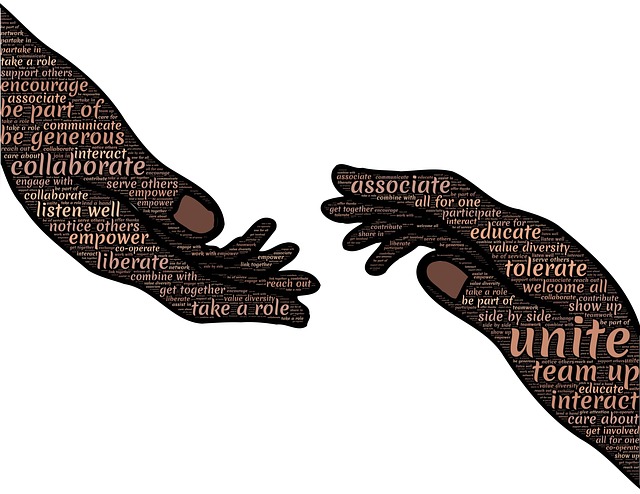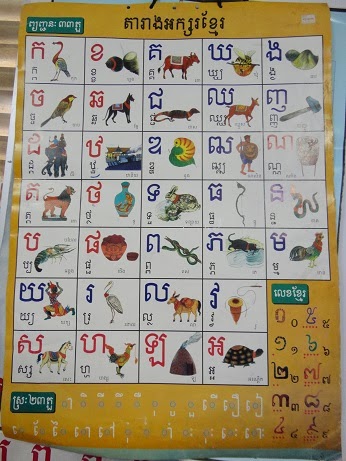How do educators prepare elementary classroom teachers to support culturally and linguistically diverse students in their classrooms? Is our teacher education program doing enough? We investigated these questions through our research of elementary pre-service teachers’ written reflections.
Teacher Reflection in Teacher Education
In this study, we investigated 23 pre-service teachers’ (mis)representation of emergent bilinguals in their written reflections. We used reflective practice (Schön, 1983, 1987) and instructional needs of emergent bilinguals (Zwiers 2007, 2009, 2014) to ground our study in order to understand the varied ways emergent bilinguals were perceived and characterized in elementary pre-service teachers’ written reflections. Schön suggested that reflective practice refers to teachers intentionally thinking about specific aspects of pedagogical practice that will lead to professional change and growth (1987). Zwiers and Crawford (2009) mentioned that the primary instructional need of emergent bilinguals is accelerated language development. Given accelerated language development will assist emergent bilingual students to share their ideas, support their ideas with evidence, and create new knowledge with other students.
One of the main goals of our teacher education program is for pre-service teachers to consider their beliefs, reflect on their teaching in the moment of teaching (Schön, 1983), and to think on their feet so that they can alter instructional decisions to meet the needs of all students. Schön refers to this as reflection-in-action. Engaging in this process requires pre-service teachers to become aware of their knowing-in–action. We agree with Schön, who suggested that only through reflection could teachers begin to understand their daily practices.
García, Kleifgen & Falchi (2008) suggested that English language learners are emergent bilinguals, which means these children are able to function in their home language as well as in English, their new language in schools. Teacher education programs can help develop the knowledge base and skills for pre-service teachers to encourage appropriate teaching practices of emergent bilinguals. Institutional teacher education programs structure how the profession responds to processes of learning to teach (Freeman & Johnson, 1998). In our opinion, not all teacher education programs provide strong methods courses on how to accommodate and meet the needs of emergent bilinguals in a mainstream classroom. Teacher education programs can further facilitate language teaching and learning to better prepare pre-service teachers to work with emergent bilingual students. Freeman and Johnson (1998) write, “The knowledge-base of language teacher education needs to account for the teacher as a learner of teaching, the social context of schools and schooling within which teacher-learning and teaching occur, and the activities of both language teaching and language learning” (p. 397). Mixing emergent bilinguals with native English speakers in classrooms can pose pedagogical challenges for teachers; oftentimes teachers overlook the language needs of emergent bilinguals in their practices.
Purpose of Current Study
The pre-service teachers in our study were provided with specific methods courses to support their content and pedagogy knowledge for working with emergent bilingual students. The purpose of our study was to investigate and analyze how elementary pre-service teachers are (mis)(re)presenting emergent bilinguals in their written reflections of teaching.
The two questions that guided the study were:
- Are pre-service teachers representing emergent bilinguals in their written reflections?
- To what degree are pre-service teachers conceiving of representing emergent bilinguals in an asset-based framework in their written reflections?
It was our hope that the findings would encourage further research and discussions regarding ways to support pre-service teachers in recognizing the needs and assets of all learners, but especially emergent bilingual students, through their reflective practices.
Research on Teacher Reflection and Emergent Bilingual Students
We situated our study in Dewey’s understanding of reflection, which states that one of the main goals of education is to help people acquire habits of reflection so that they can engage in intellectual thought and action, rather than routine thought and action (Dewey, 1933). Dewey was concerned with reflection and not being guided by routine thinking – this is our teacher education program’s concern with pre-service teachers’ written reflections. One of the goals of our teacher education program is for our pre-service teachers to question their beliefs about teaching emergent bilinguals and to examine where these beliefs originated in order to be more critical and reflective of their pedagogical practices. Since emergent bilinguals come to a classroom with diverse language abilities, pre-service teachers need to know how to reflect on and consider their teaching techniques when a variety of learning needs are present within their classroom.
Dewey (1933) considered reflection as, “active, persistent, and careful consideration of any belief or supposed form of knowledge” (p.16). It is important for pre-service teachers to carefully consider their views about teaching emergent bilinguals. Scholars Darling-Hammond and Bransford (2005) echoed Dewey when they suggested reflection requires pre-service teachers to re-think previously held beliefs and be open to the possibility of re-examining one’s perspective. The authors think it is important to re-examine previously held beliefs so that teachers do not continue perpetuating potential injustices and inequalities.
We also want pre-service teachers to reflect on their teaching in the moment of teaching (Schön, 1983), and to think on their feet so that they can alter instructional decisions to meet the needs of students. Schön (1983) refers to this as reflection-in-action. Engaging in this process requires pre-service teachers to become aware of their knowing-in–action, being aware of what is happening subconsciously. During reflection-in-action, pre-service teachers move beyond their routine ways of knowing (Dewey, 1933) and engage in dynamic on-the-spot teaching and learning, based on their reflection-in-the-moment when teaching and learning occurs.
Our study also calls upon Jeff Zwiers’ work that highlights the academic language needs of emergent bilinguals in mainstream classrooms. An outcome of our program is for pre-service teachers to consider their own beliefs and not to overlook a learner in their practice because of a difference in culture or learning needs. We want our pre-service teachers to know that “English language learners (emergent bilinguals) need accelerated language development. This acceleration is fostered by experiences that allow them to share their thoughts, support them with evidence, and co-construct knowledge” (Zwiers & Crawford, 2009, pg. 73). This is one of our teacher education program’s goals for our pre-service teachers. Zwiers (2006, 2007, 2013) suggests that teachers need to give all students a variety of learning opportunities within each lesson and subject taught throughout the school day. Being able to understand the learning practices that took place through reflective practice is crucial to the pedagogical development of teachers and the success of students.
Oftentimes students and teachers are unsure of how to use or implement “school language,” which is referred to as academic language (Zwiers, 2013, p. 1). Compounding this challenge is another problem, “…teachers do not value the knowledge and language skills that linguistically diverse students bring to class” (Zwiers, 2013, p. 11). Students come to school with a language in place and many times their abilities are not recognized in a classroom. A challenge for pre-service teachers is to recognize, assess, and implement instruction based on students’ diverse cultural and linguistic skills. In our teacher education courses, we encouraged pre-service teachers to engage in written reflections to examine the cultural and linguistic assets and provide meaningful instruction for emergent bilingual students.
Methodology: Participants and Data Collection
Participants in this study were 23 pre-service teachers at a large urban university in the Midwest. The participants were enrolled in a post-baccalaureate teaching licensure program. All participants were preparing to be elementary general education teachers.
Participants were required to take six methods courses prior to participating in a full time student teaching experience. Three of the six methods courses were:
- Reading in the Elementary Grades
- Language Arts in the Elementary Grades
- Teaching English Learners in the Elementary Classroom.
These courses were taken while the students worked 400 hours in their placement classroom. The schedule was organized on a block format, alternating between two weeks on campus and two weeks at the field experience site with K-6 students. According to Minnesota Department of Education (2016), in 2015, an estimated 8,552 emergent bilingual students were identified in Minneapolis public schools with the majority falling in primary grades K-6. Minneapolis ranks the second highest for English learners in the state (Minnesota Department of Education, 2016).
Since the pre-service teachers are in Minneapolis placements with high emergent bilingual populations, the two literacy courses were designed to advance students’ understanding and practical application of curricular and methodological issues in teaching reading and language arts for culturally and linguistically diverse classrooms. The English learner course was designed to give a solid knowledge of research-based pedagogy for emergent bilingual students. Pre-service teachers were assigned four literacy lessons to teach before full time student teaching. They reflected in writing on these four lessons, which they taught during their practicum experience.
We used written reflections for one of the four lessons as the data source to address our research question. This reflection was written after the lesson was taught. The title of the assignment was “Writing in Response to Literature.” The assignment asked pre-service teachers to choose an engaging picture book, code the book with higher order questions, and design a follow-up writing activity. Pre-service teachers taught the lesson and reflected on the lesson by answering these questions, which were specific to the learners in their classrooms:
- To what extent did the whole class or group learn what you intended them to learn? Cite specific examples and/or evidence.
- Who did the lesson work best for? What didn’t work and for whom?
- What did you learn about your students as learners?
We conducted an inductive content analysis, wherein we identified the themes in pre-service teachers’ written reflections based on literature relating to reflection and reflective practice (Dewey, 1933; Schön, 1983) and the academic needs of emergent bilinguals (Zwiers, 2013). Written reflections were coded for patterns, categories and emerging themes (Lincoln, 1994; Saldana, 2008). We went through several iterations of reading and coding the data. Next, we read each other’s comments on each reflection and discussed these comments as a means of triangulation of data to ensure that we were garnering similar interpretations from the written reflections.
Findings and Discussion
The data showed that after 23 pre-service teachers taught a literacy lesson to K-6 students, 74% did not mention emergent bilinguals in their written reflections, even though they were teaching in classrooms that had emergent bilingual students. Of the percentage that mentioned emergent bilinguals in their written reflections, 40% referred to emergent bilinguals from a deficit perspective. Based on the literature pertaining to how emergent bilinguals are perceived in K-6 classrooms (Zwiers, 2013), we were not surprised to glean this information from the data. However, we were disturbed by our findings because we earnestly teach our pre-service teachers to develop an asset orientation towards emergent bilinguals (Moll, Neff, Amanti, & Gonzalez, 1992).
The pre-service teachers were not teaching full-time in a classroom during this placement. The students were on a block schedule, where they were at their placement sites every two weeks to implement lessons. This may have impacted their comfort level and relationship with the students. We did not have follow-up conversations with the pre-service teachers due to the block schedule and limited time outside of the classroom. What we know as researchers/instructors comes from students’ written reflections. We were unable to ask clarifying follow-up questions of the participants. Lastly, given that 23 is a small sample size, results cannot be generalized to all pre-service teachers in university programs.
Conclusion
This research was motivated by our desire to understand how our pre-service teachers perceived emergent bilinguals through their written reflections. Our pre-service teachers are taught a stand-alone English learner course and we wanted to identify that knowledge gained from this course was being applied to other courses and pedagogical practices. Our interest led to rich discussions as we collaboratively investigated how our pre-service teachers were (mis)(re)presenting emergent bilinguals in their written reflections. As a result of looking at these written reflections, we learned of the limited and varying ways our pre-service teachers perceived emergent bilinguals.
Our study has challenged us to further investigate practical ways to support pre-service teachers to become reflective practitioners, including
- how to instruct pre-service teachers to reflect in writing on their pedagogy to include all groups of learners in their reflection,
- how to guide pre-service teachers to reflect on emergent bilinguals from an asset orientation, and
- how to (re)organize our elementary methods syllabi to allow for more co-teaching between the English learner and literacy methods instructors since the pre-service teachers are in placements that require co-teaching.
Being able to see and experience co-teaching taking place in their methods courses could help encourage and provide insights for their own teaching with students.
Although further research is needed, the findings from this study indicate that emergent bilinguals were minimally represented in pre-service teachers’ written reflections. Our pre-service teachers were taught to respond to groups of students in their methods courses. Exemplar written reflections were provided for our pre-service teachers to gain understanding and knowledge of how to reflect on teaching before going to their placements to implement lessons. Although our findings represent pre-service teachers’ written reflections from only one semester, we cautiously offer four recommendations.
- Elementary teacher education programs should provide spaces for methods instructors to co-teach and debrief with English learner instructors as a model for pre-service teachers to observe;
- Teacher-educators should clearly teach pre-service teachers how to reflect on their pedagogy to include references to diverse learners by explicitly modeling that process during each course session;
- Pre-service teachers should be asked to reflect on groups of students such as emergent bilinguals, at the end of each lesson taught;
- Teacher education programs need to offer more courses designed specifically for elementary mainstream teachers about English learners. The enactment of these recommendations would likely move pre-service teachers to include more emergent bilinguals in their written reflections and develop stronger, well-prepared teachers.
References
Darling-Hammond, L., & Bransford, J. (2005). Preparing teachers for a changing world: What teachers should know and be able to do. San Francisco, CA: Josey Bass
Dewey, J. (1933). How we think. Boston: D.C. Heath.
Dewey, J. (1938). Experience and education, (6th ed.). New York: Macmillan.
Freeman, D., & Johnson, K. E. (1998). Reconceptualizing the knowledge-base of language teacher education. Tesol Quarterly, 397-417.
García, O., Kleifgen, J. A., & Falchi, L. (2008). From English Language Learners to Emergent Bilinguals. Equity Matters. Research Review No. 1. Campaign for Educational Equity, Teachers College, Columbia University.
Minnesota Department of Education (2016). English Learner Education. English Learners in Minnesota Report 2015-2016 http://education.state.mn.us/MDE/SchSup/EngLearn/index.html
Moll, L. C., Amanti, C., Neff, D., & Gonzalez, N. (1992). Funds of knowledge for teaching: Using a qualitative approach to connect homes and classrooms. Theory into Practice, 31(2) 132-141.
Schön, D.A. (1983). The reflective practitioner: How professionals think in action. New York: Basic Books.
Schön, D.A. (1987). Educating the reflective practitioner: Toward a new design for teaching and learning in the professions. San Francisco: Jossey-Bass.
Zwiers, J. (2006). Integrating academic language, thinking, and content: Learning scaffolds for non-native speakers in the middle grades. Journal of English for Academic Purposes, 5(4), 317-332.
Zwiers, J. (2007). Teacher practices and perspectives for developing academic language. International journal of applied linguistics, 17(1), 93-116.
Zwiers, J. (2013). Building academic language: Essential practices for content classrooms, grades 5-12. John Wiley & Sons.
Zwiers, J., & Crawford, M. (2009). How to start academic conversations. Educational Leadership, 66(7), 70-73.
Zwiers, J., O’Hara, S., & Pritchard, R. (2014). Common core standards in diverse classrooms: essential practices for developing academic language and disciplinary literacy. Stenhouse Publishers.










